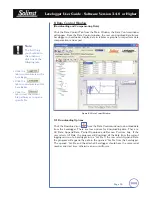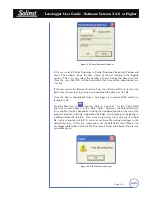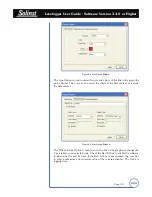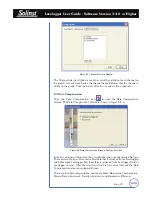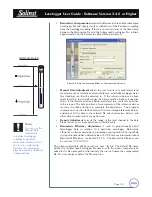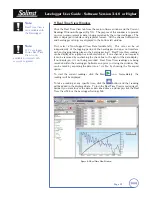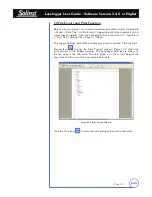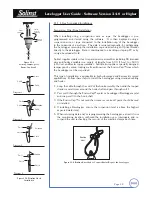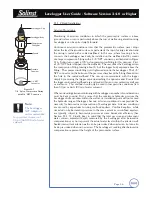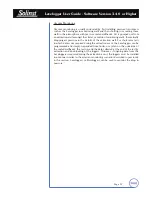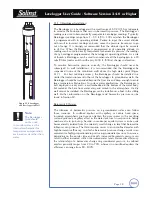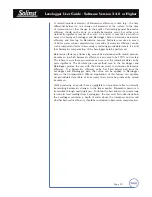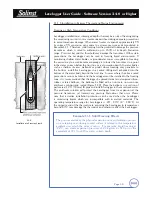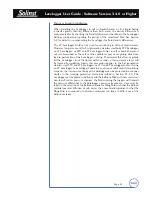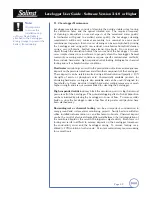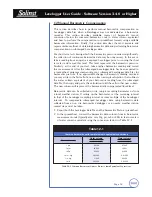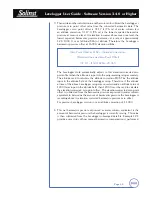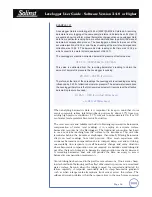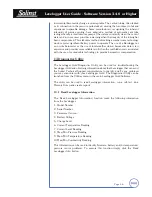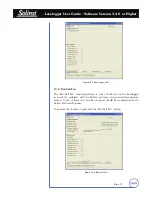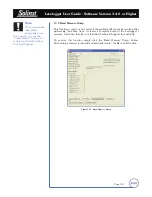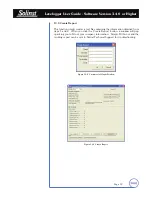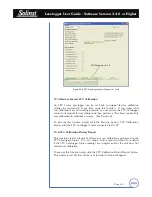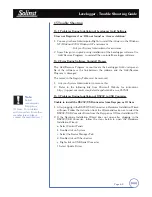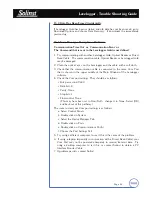
Levelogger User Guide - Software Version 3.4.0 or Higher
Page 48
11.1.3 Barologger Installation
The Barologger is a Levelogger with a small range of 4.92 ft (1.5 m) adequate
to monitor the fluctuations that occur in barometric pressure. The Barologger’s
readings are used to barometrically compensate Levelogger readings. Typically,
Barologger readings range from 1 – 3.3 ft (30 – 100 cm) when the Barologger
is programmed with its operating altitude. Failure to input the correct altitude
with result in incorrect readings and may cause the pressure transducer to go
out of range. It is strongly recommended that the altitude input be accurate
to ≤10 m. When the Barologger is programmed at its operating altitude, its
readings can be used to directly compensate for barometric pressure, the readings
of any Levelogger programmed at the Levelogger’s operating altitude. As a rule
of thumb, a Barologger can be used to compensate all the Leveloggers in a 20
mile (30 km) radius and/or with every 1000 ft. (300 m) change in elevation.
To monitor barometric pressure correctly, the Barologger should never be
submerged. In well installations, it is recommended that the Barologger be
suspended in one of the monitored wells above the high water point (Figure
11-7). For best reading accuracy, the Barologger should be installed in a
similar thermal environment to that of the Levelogger. In groundwater wells, the
Barologger should be suspended beyond the frost line and deep enough to avoid
large temperature fluctuations. In surface water applications, the Barologger is
best deployed in a dry well – a well embedded in the bottom of the water body,
but sealed at the base from water entry and vented to the atmosphere. If a dry
well cannot be installed, the Barologger can be installed on a float in the stilling
well. Further information on the Barologger and barometric pressure can be
found in Section 12.
Barometric Efficiency
The influence of barometric pressure on a groundwater surface can follow
three scenarios. In confined aquifers with capillary or vadose head space,
increased atmospheric pressure can tighten the pore spaces in the overlying
soil and produce a capillary effect as the water level rises in response to having
nowhere else to go but up. Second, some deeper aquifer systems can be quite
barometrically isolated from the relatively small change in level that barometric
influences can produce. The third scenario occurs in an unconfined aquifer, with
high barometric efficiency, in which a barometric pressure change results in an
equivalent or highly proportional drop or rise in groundwater pressure. In essence,
depending on the aquifer type and depth, increased barometric pressure can
result in either increased, static or decreased water levels. Barometric efficiency,
the relationship of a barometric change on groundwater pressure, in confined
aquifers generally ranges from 20 to 75%, whereas in unconfined aquifers the
efficiency can range from 80 - 100%.
Note:
The Barologger
Gold should
not be used
to monitor water, as the
internal mathematics for
temperature compensation
are based on air rather than
water.
Figure 11-8 Levelogger
and Barologger in Well
Levelogger
Bar
ologger


